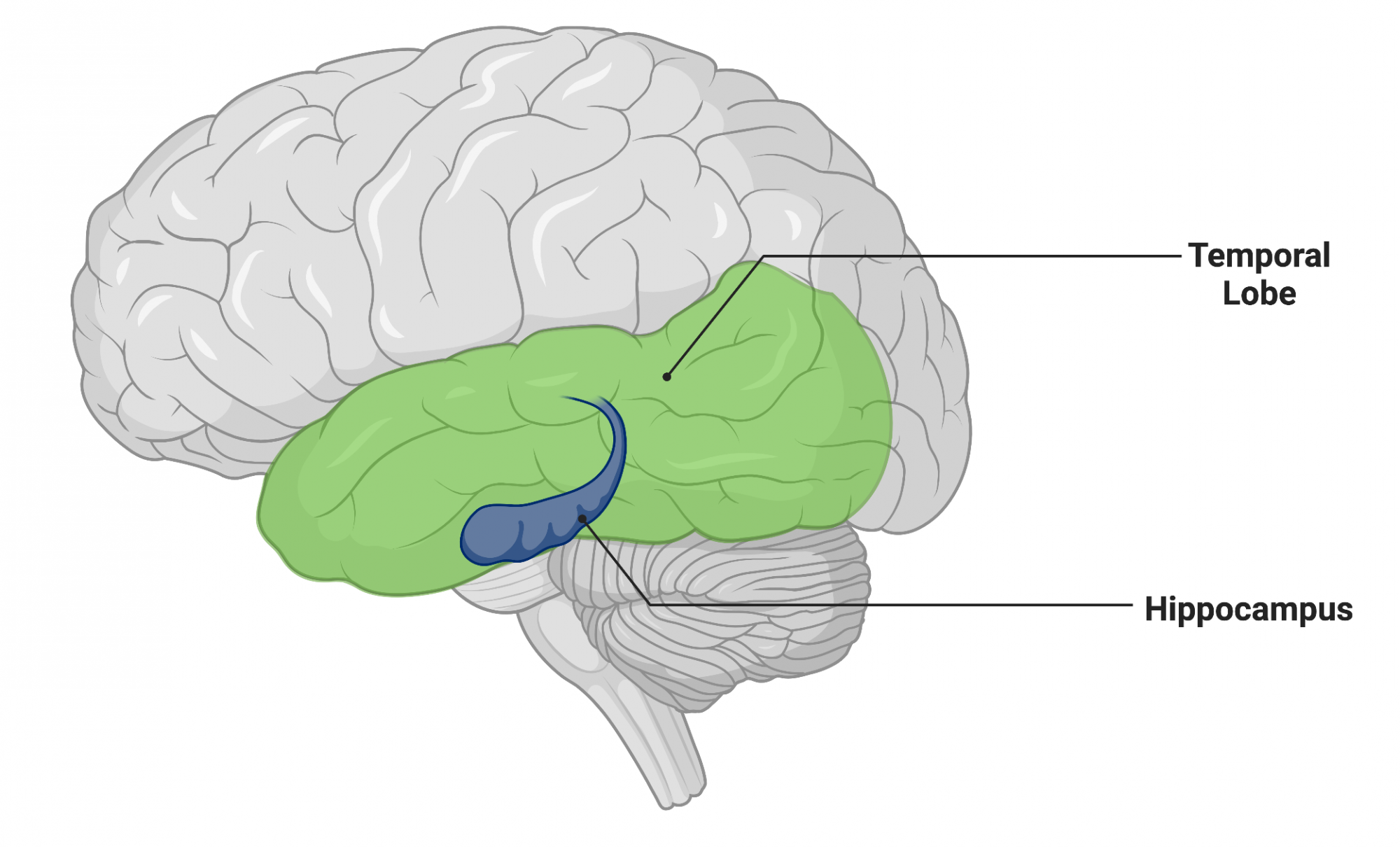*Geek Box: Hippocampal Occupancy Score [HOC]
It is helpful for understanding the present study to have some grasp of what the main outcome measure was, and what it represents. The hippocampus is a key brain region for higher cognition, particularly learning and memory. It is located deep in the temporal lobe, one of the four major brain lobes, that is responsible for encoding sensory inputs, verbal reasoning, and visuo-spatial reasoning.

Atrophy of the hippocampus is one of the early stages associated with mild cognitive impairment [MCI], which itself is the beginning of neurodegenerative decline on the road to dementia and Alzheimer’s Disease.
The HOC is an estimate of the atrophy in medial temporal lobes, and is calculated as the ratio of hippocampal volume to the sum of hippocampal and inferior lateral ventricle volume [LVV]. This is calculated for both left and right brain hemispheres, and expressed as an average for both hemispheres.
Thus, a reduction in HOC indicates brain atrophy in this region, while an expansion in LVV also represents loss of brain tissue in this region. Hippocampal volume is expressed in cubic centimetres [cm3]. One benefit of using HOC is that it can be standardised according to age and sex, because the average hippocampal volume at a given age, and between men and women, is known.
From the ages of 67 and 63 years in women and men, respectively, there is a decrease in hippocampal volume that exceeds the rate of loss of other brain grey matter [the major tissue component of the central nervous system]. This indicates that the hippocampus in particular may be vulnerable to age-related decline, and associated cognitive decline.
